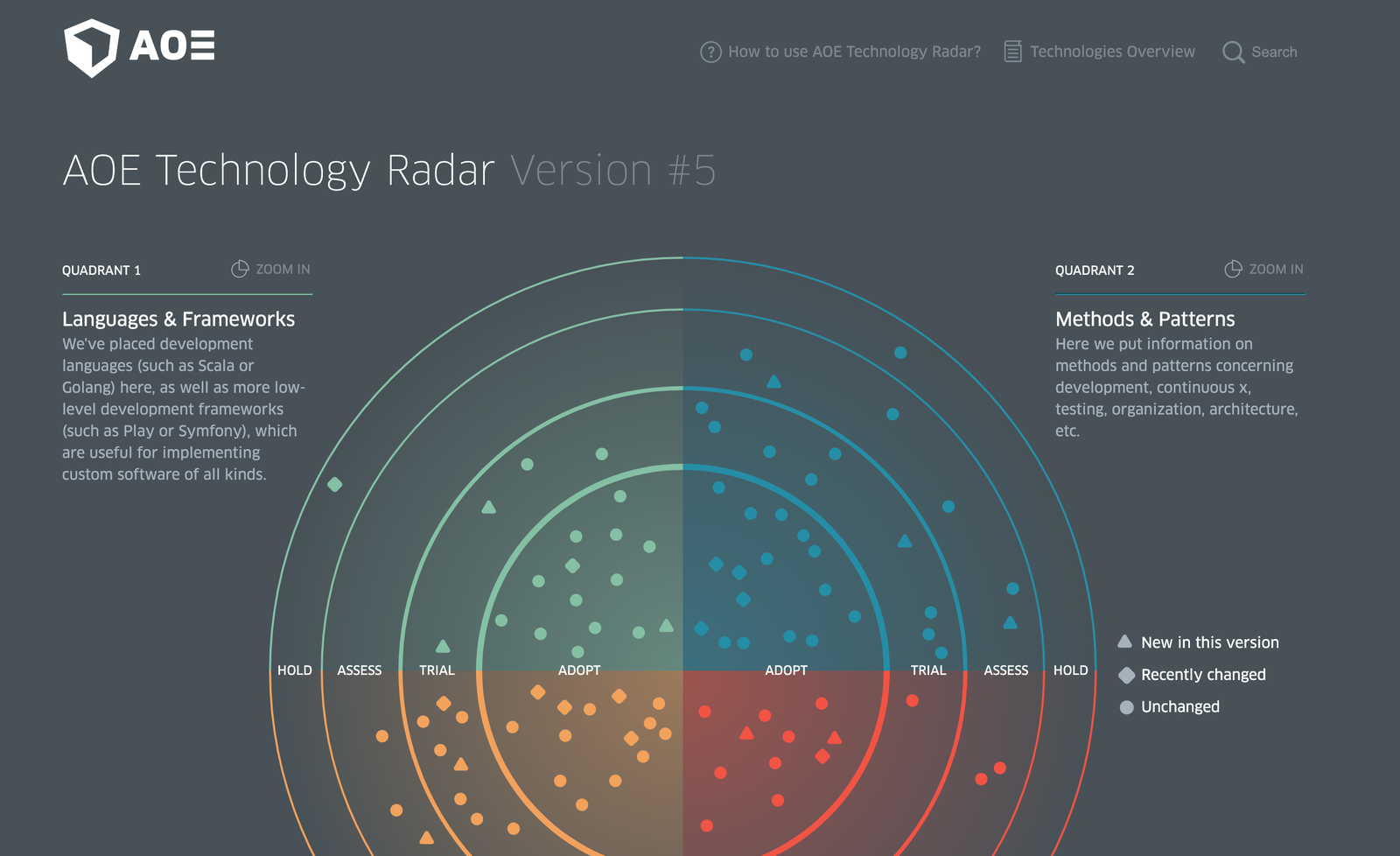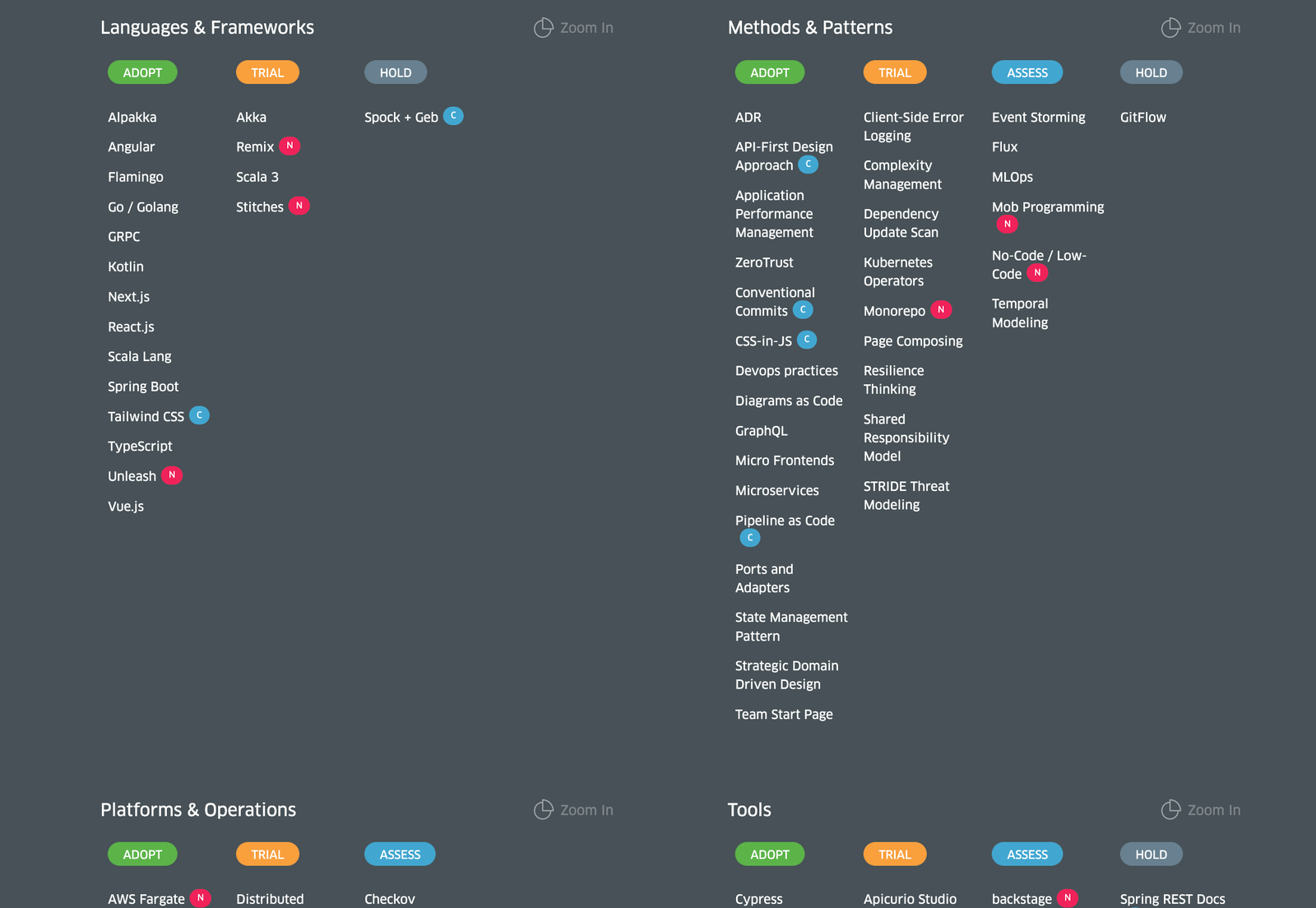Get in touch
The world is complex. With regard to the phenomenon of digitalization, this applies particularly to technological developments and the necessary decision-making in IT organizations. Particularly in the area of digitalization and technology, the possibilities are extremely diverse and highly differentiated, and there is a high degree of dynamics: There are many ways and possibilities to tackle problems; at the same time, it is difficult to predict what will end when and why, and what is worth dealing with in more detail.
So how do you find a suitable "tech strategy" for your own IT organization? How do you make better (informed and sustainable) decisions for your projects? How do you act creatively and meaningfully instead of reactively falling short of opportunities? The communication around a technology radar and the appropriate preparation of the results can help with meaningful orientation and thus support to make "better" decisions.
In this article I would like to report on the practical experience and potential of a technology radar for IT organizations. In addition to organizing the accompanying communication, we will also show how to generate your own "radar visualization" using the tool provided by AOE as Open Source.
At AOE, we have been maintaining both a company-wide technology radar and project-internal technology radars for several years. But what does this actually involve?
A technology radar can thus fulfill a helpful function in IT organizations: It motivates joint learning, stimulates cross-team innovation, reduces risk in the technology portfolio and provides orientation so that technological decisions can be made in a more informed and reflective manner.
We have been publishing the AOE Tech Radar regularly for 5 years: It helps us internally in the functions mentioned, but also shows the outside world how our technology and software development expertise relates to certain topics and technologies and what we are currently particularly concerned about. In this way, we also want to make a contribution to other IT organizations.
For us, we chose a rough categorization of "technology blips" (as we call the entries in the technology radar):
We classify the blips into 4 levels according to our assessment and evaluation:
This format has become the standard for a tech radar, as Thoughtworks did with its technology radar. More details.
It also needs an appealing visualization and interaction, of course, one that invites you to "explore" the blips:


We regularly organize this process for publishing new releases in such a way that all teams are invited twice a year to propose suggestions for new technology blips or relevant changes to existing blips based on their project experience. We collect these on a virtual board, where they can already be discussed.
Then we organize a "radar update" meeting. Here we come together for half a day with the appropriate experts from our COPs (Community of Practices on different focus topics) and representatives from the teams to discuss these suggestions.
In this way, the roughly updated radar is created piece by piece during this meeting. Towards the end of the meeting, tasks are distributed according to the pull principle: The main tasks concern the formulation and the actual updating of the blips. Here we directly use Github and pull requests for updating, since the radar itself is maintained as code in Github. Incidentally, we also maintain smaller updates between major releases.
Creating your own radar is easy with AOE's Tech Radar, available as Open Source.
Create a new project folder:
mkdir myTechRadar cd myTechRadar
Create the first release by creating an appropriate folder and creating a first blip:
mkdir -p radar/2022-06-01 vi radar/2022-06-01/react.md
Fill this blip with:
--- title: "React" ring: adopt quadrant: languages-and-frameworks featured: false --- Text goes here. You can use **markdown** here.
Now you can build the first radar: just add the appropriate dependency and run the designated tasks (the latest versions of node and npm should be installed for this):
npm i aoe_technology_radar npx aoe_technology_radar-buildRadar npx aoe_technology_radar-generateJson
The generated radar is then located in the "build" folder and can be deployed from there. To view it beforehand, you can start a local web server as follows:
cd build python3 -m http.server 8080
Then open it at http://localhost:8080/.
For a more comprehensive example, you can also take a look at the source code or our radar, which by the way is also automatically deployed to production after each commit on the main code line.
We are looking forward to contributions and feedback to the open source project.
We wish joyful and fruitful discussions around your tech radar.
AOE Tech Radar